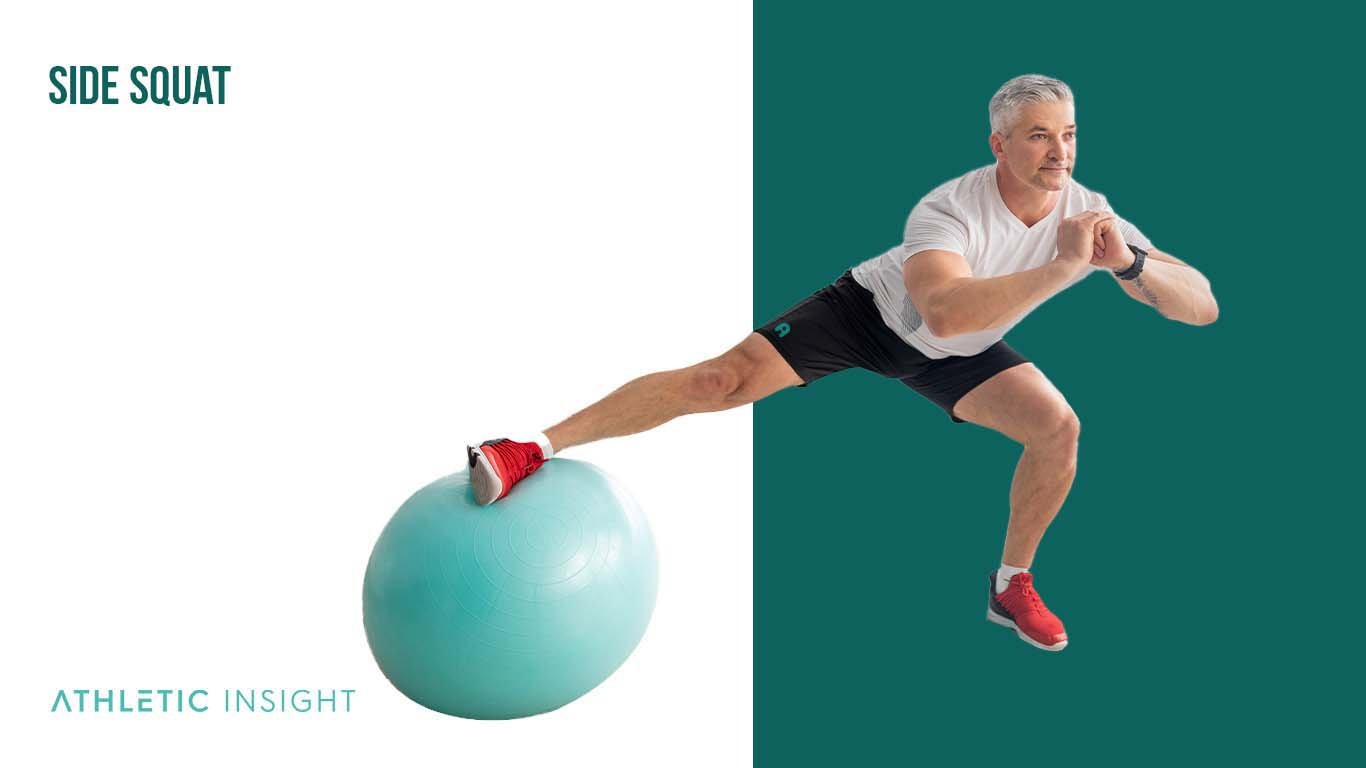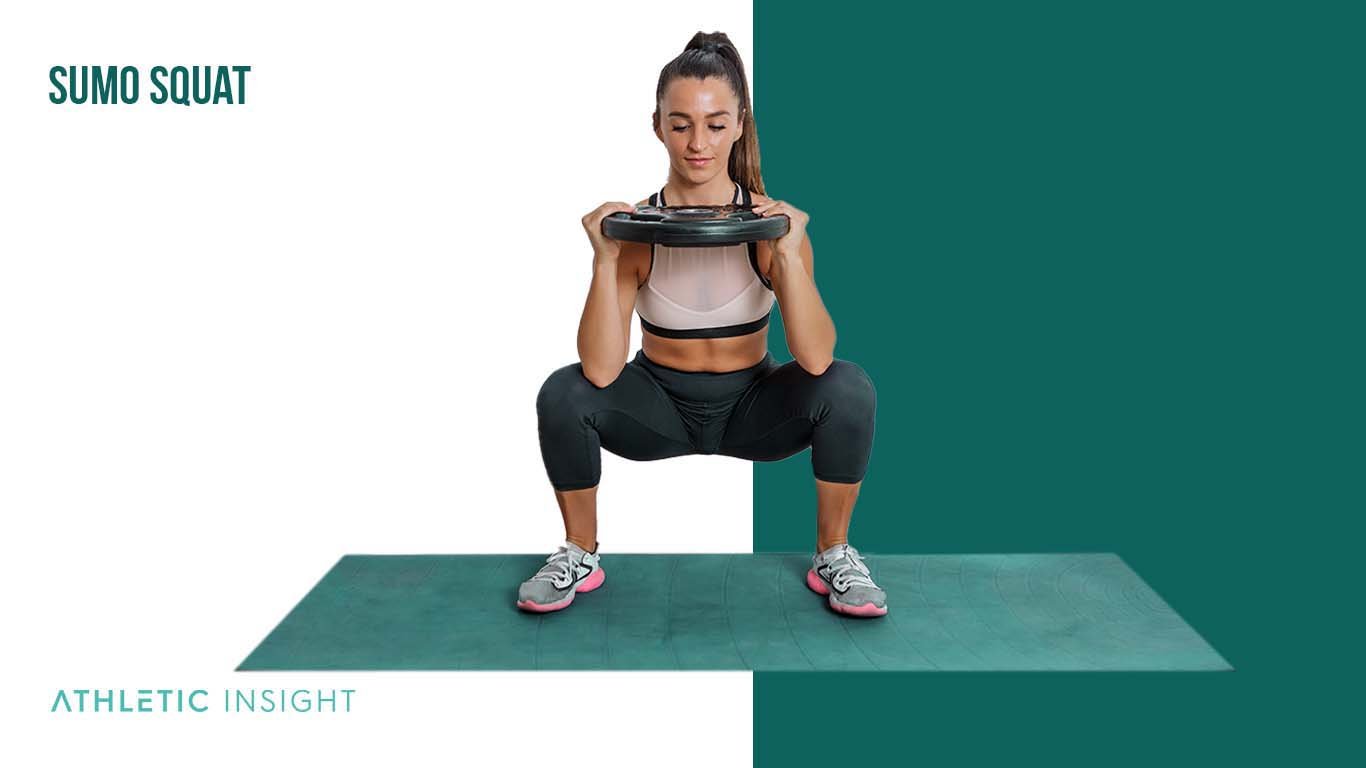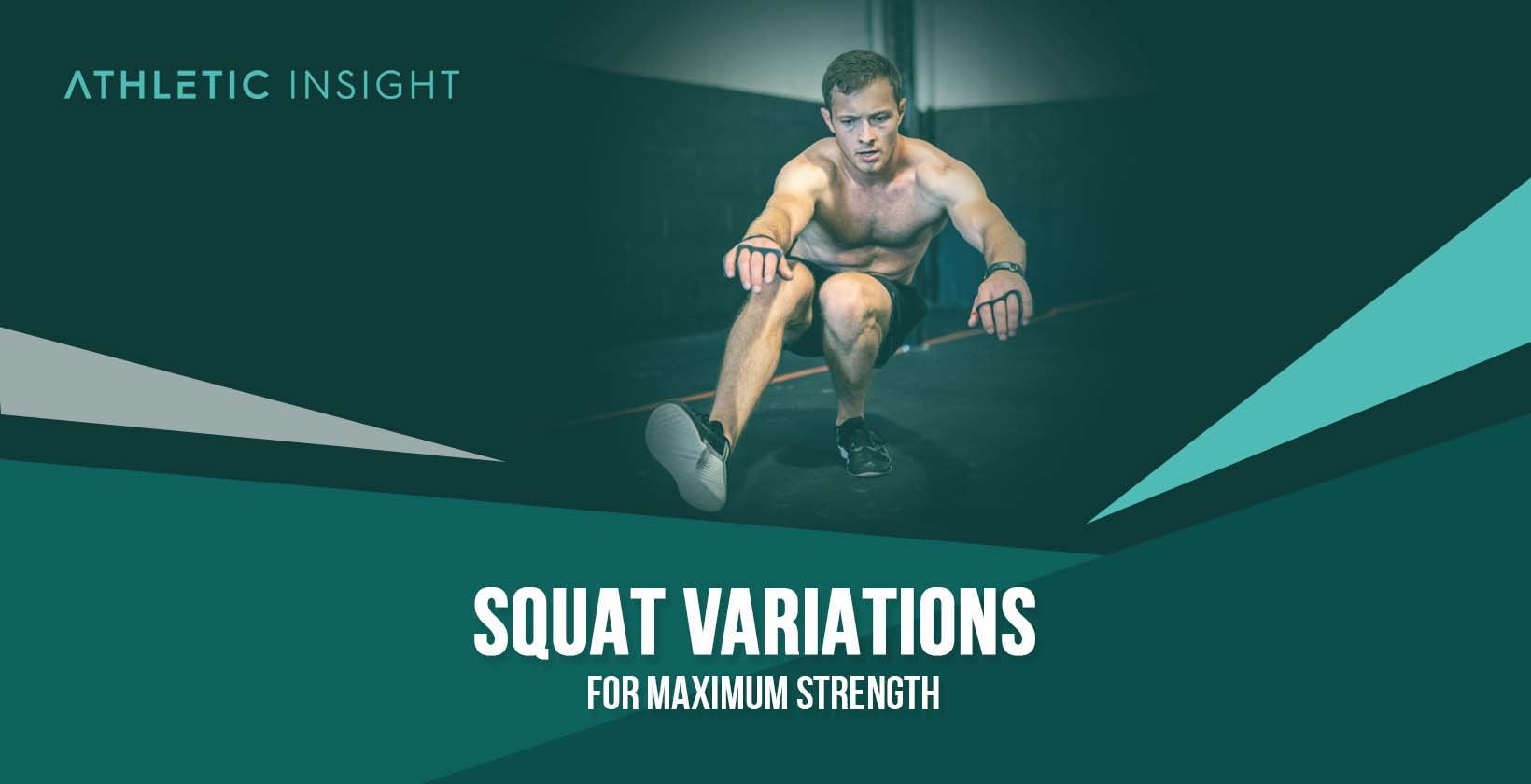A squat variation is a different form of exercise that targets muscles that may not be worked as well with the traditional squat. They are necessary for achieving overall strength and agility. Squat variations increase flexibility, improve balance, promote muscle growth, help aid with injury prevention, and assist with overall athletic performance.
However, a few common mistakes can be made when performing these exercises which may lead to muscle tears and joint pain. It is essential to be aware of these mistakes and take measures to prevent them from getting the most out of your squats.
While the squat is an effective workout for muscle growth, squat variations for maximum strength can help you to improve your squatting performance. There are several different squat variations that can target different muscle groups and improve your strength. Here are some of the main squat variations that you use to hold the chest and core steady.
- Wall Squat
- Bodyweight Squat
- Side Squat
- Prisoner Squat
- Single-Leg Squat
- Pistol Squat
- Chair Squat
- Eagle Squat
- Grand Plié
- Sumo Squat
- Squat and Walk
- Squat Kickback
- Frog Squat
- Box Squat
- Bulgarian Split Squat
Today we will be talking about these squat variations and how they can help improve your strength in squatting.
1. Wall Squat
The wall squat variation focuses on the glutes, hamstrings, and quadriceps muscles. It’s a simple exercise that can be performed almost anywhere for beginners, athletes, and even weightlifters. The wall squat is an effective workout when you’re short on time or traveling and don’t have access to a gym.
Alternatives to the wall squat are the bodyweight and prisoner squat. These are great workouts when holding the squat position for an extended period becomes hard. One common mistake when doing the wall squat is to let the hips sag down. This reduces the effectiveness of the exercise.
Remedy this by keeping your back against the wall and your core and lats engaged. Keep your chest up to improve the efficiency of the wall squat.
2. Bodyweight Squat
The bodyweight squat is a variation that builds strength and muscle mass in the quadriceps, hamstrings, and glutes. It’s an efficient exercise to improve your performance in the traditional squat.
The bodyweight squat can be done anywhere at any time as well. It’s a great exercise for beginners and athletes as it helps them build flexibility in their legs. Use your chest and core to keep the back straight to perform it properly.
One alternative to the body squat is the front squat. This variation targets the quads and hamstrings more than the traditional bodyweight squat.
One common mistake when doing the bodyweight squat is to let the knees cave in. This puts unnecessary stress on the knee joint and can cause injury. Remedy this by only going down as far as you feel comfortable.
3. Side Squat
The side squat is a variation that targets the abductor muscles and the glutes. This variation is suitable for athletes who need to improve their lateral movement.

It’s also a great exercise for those with knee problems. The side squat can be done with a barbell or dumbbells. To do so, use your core, chest, and glutes to push outwards as you squat. One alternative to the side squat is the pistol squat.
One common mistake when doing the side squat is to lean too far forward. This places stress on the lower back and can cause injury. Remedy this by keeping your back straight and your core engaged.
4. Prisoner Squat
The prisoner squat is a variation that strengthens the muscles in the upper back, glutes, and hamstrings for weightlifters. It’s an excellent exercise for athletes who need to improve their squatting performance.
The prisoner squat is a simple exercise that can be done anywhere. To do it, stand with your feet shoulder-width apart and your hands behind your head. Squat down as far as possible, and then push up to the starting position. One alternative to the prisoner squat is the goblet squat.
One common mistake when doing the prisoner squat is to round your back. This places unnecessary stress on the spine and can cause injury. Remedy this by keeping your back straight and your chest up.
5. Single-Leg Squat
The single-leg squat is a variation of the traditional squat that targets the glutes, hamstrings, calves, shins, thighs, and abdominals for athletes. It’s a critical exercise for athletes who need to improve their balance, strength, and stability.

The single-leg squat can be done with a barbell or dumbbells. It’s crucial to maintain proper form when doing this exercise. To do so, move slowly but steadily and use your chest, core, and glutes to push outwards as you squat.
It will help you target the muscles more effectively. One alternative to the single-leg squat is the step up. Leaning too far forward is also a common mistake when doing the single-leg squat. Remedy this by keeping your back straight and your core engaged throughout the workout.
6. Pistol Squat
The pistol squat is a variation to target the muscles in the glutes, hip adductors, calves, core, hamstrings, and quadriceps. It’s a great exercise for athletes who need to improve their range of motion and build conditioning.
The pistol squat can be done with a kettlebell or dumbbell. To maintain proper form when doing this exercise, use your ankle that’s on the floor, combined with your core and glutes, to push outwards as you squat.
One alternative to the pistol squat is the single-leg squat. One common mistake when doing the pistol squat is to lean too far forward or backward. It places stress on the lower back and the knee. Remedy this by keeping your back straight and your core engaged.
7. Chair Squat
The chair squat is a significant variation that targets the muscles in the glutes, hamstrings, and quadriceps. It’s an important exercise for athletes who need to improve core strength while working on their glutes or for beginners who need to break into doing squats.
The chair squat can be done with dumbbells. It’s essential to maintain proper form when doing this exercise to reap its effects. One alternative to the chair squat is the goblet squat.
One common mistake when doing the chair squat is to round your back. This places unnecessary stress on the spine. Remedy this by keeping your back straight and your chest up.
8. Eagle Squat
The eagle squat is a variation that targets the muscles in the hips, knees, glutes, and ankles. It’s a productive exercise for bodybuilders and athletes who need to improve their flexibility and range of motion.
The eagle squat can be done holding a weight plate, but it is best done without weight. One alternative to the eagle squat is the goblet squat.
The most common mistake when doing the eagle squat is leaning forward, sideways, or backward. This happens because of a lack of flexibility in the hips and core strength. Remedy this with the goblet squat.
9. Grand Plie
The grand plie is a variation that targets the inner thighs, glutes, squats, and hamstrings. It’s an important exercise for beginners, athletes, weightlifters, and bodybuilders who want to increase flexibility and stability.
The grand plie can be done with a barbell or with a dumbbell in each hand. If this exercise is a challenge, try the sumo squat. It doesn’t put as much pressure on the inner thighs and helps you work up to the grand plie.
One common mistake when doing the grand plie is to lean too far forward. It happens when you don’t have flexibility in the hips. Unfortunately, it puts excess stress on the lower back. Remedy this by keeping your back straight.
10. Sumo Squat
The sumo squat is a variation that targets the adductors, glutes, quads, hamstrings, calves, hip flexors, and core. It is an effective workout for weight lifters and bodybuilders because it works so many muscles at once.

The sumo squat is best done with a kettlebell or dumbbell. One alternative to the sumo squat is the banded glute bridge. It targets the same muscles but allows you to lie down on the floor.
One common mistake when doing the sumo squat is letting the knees cave inward. It happens as a result of weak glutes. Remedy this by stretching before your workout and lowering your weight.
11. Squat and Walk
The squat and walk is a variation that targets the quadriceps and glutes. It is a fun workout for advanced athletes who want to activate and strengthen the muscles in their legs and avoid knee injuries.
The squat and walk are best done with a resistance band. One alternative to the exercise is the walking lunge. One common mistake when doing the squat walk is losing balance.
It is a common mistake that could happen because you look down at your feet or have a weak core. Remedy it by maintaining a tight chest and core throughout the workout and looking forward.
12. Squat Kickback
The squat kickback is a variation that targets the hamstrings, glutes, and calves. It is an effective workout for athletes who want to improve their speed and power.
The squat kickback is best done with a resistance band. One alternative to the exercise is the reverse lunge.
A common mistake when doing the squat kickback is, you guessed it, leaning too far forward. Remedy this by keeping your back straight and your chest up.
13. Frog Squat
The frog squat is a variation that targets the quadriceps, glutes, and hamstrings. The frog squat is excellent for beginners because it prepares them for weighted sumo and plie variations.
The frog squat can be done with a weight plate, but it is best done without weight. One alternative to the frog squat is the goblet squat.
A common mistake when doing the frog squat is letting the knees cave in. Remedy this by stretching before your workout and lowering your weight.
14. Box Squat
The box squat is a variation that targets the quadriceps, glutes, and hamstrings. It is a workout for athletes who want to improve their speed and power. It’s also great for beginners who are just getting started in weight training.
The box squat can be done with a weight plate or a barbell. One alternative to the box squat is the goblet squat. A common mistake when doing the box squat is letting the knees cave in.
As mentioned before, this happens as a result of weak glutes. Remedy this by stretching before your workout and lowering your weight.
15. Bulgarian Split Squat
The Bulgarian split squat is a squat variation that targets the glutes, hamstrings, and calves. It is a workout for athletes who want to improve their speed and power and build muscle mass.
The Bulgarian split squat can be done with just a weight plate or dumbbell. One alternative to the Bulgarian split squat is the lunge.
A common mistake when doing the Bulgarian split squat is rounding the back. Rounding the back places stress on the lower back, which may cause discomfort or possibly long-term damage. Remedy this by keeping your back straight and your chest up.
What to Know About Squat Variations?
Squat alternative exercises are efficient movements because they prepare the muscles and joints for weighted squats while also providing many other benefits. They help individuals work their way up to performing hardcore squats without the high risk of injury. Facts about Squat alternatives are listed below.
- Muscle Growth: Squat alternatives can benefit certain muscle groups better than squats, such as the hamstrings, calves, glutes, and quads.
- Injury Prevention: Different squat variations can help prevent injuries as they work different muscles and joints.
- Improving Athletic Performance: Certain Squat Alternatives can help to improve an athlete’s speed and power.
- Suitable for All Levels: Most squat alternatives are suitable for people of all levels, from beginners to experienced athletes.
- Versatile: Most squat alternatives are versatile exercises that can be performed in several ways.
What Are the Common Mistakes in Doing the Squat Variations?
Squat variations are great for people of all levels, from beginners to experienced athletes. They provide several benefits, such as muscle growth, injury prevention, and improved athletic performance.
However, a few common mistakes can be made when performing these exercises. It is essential to be aware of these mistakes and take measures to prevent them from getting the most out of your squats. The common mistakes in doing the Squat Variations are listed below.
- Leaning too far forward places stress on the lower back.
- Knees caving in happens due to weak glutes.
- Back rounding places stress on the lower back.
- Not going deep enough limits the benefits of the squat variations.
- Using too much weight can lead to improper form.
- Not stretching can lead to injuries.
Which Type of Squat Variation Is Beginner-Friendly?
The goblet squat is a recommended squat variation that is beginner-friendly for building lower body strength. It targets the core, back, forearms, chest, shoulders, and upper back. It is an important exercise for beginners because they can use only body weight.
The goblet squat should be chosen when one wants a full-body workout. A common mistake when doing the goblet squat is rounding the back. It places stress on the lower back. Remedy this by keeping your back straight and your chest up.
Which Type of Squat Variation Is Good for Weightlifters?
The front bar squat variation is suitable for weightlifters because it allows them to use more weight. It also targets the quads, hamstrings, and glutes. This squat variation should be done with a weightlifting barbell.
When doing the front bar squat variation, make sure to keep your back straight and your chest up. One common mistake is letting the back round. Another mistake is not going deep enough, limiting the benefits of the squat variation.
Which Type of Squat Variation Is Good for Athletes?
The low bar back squat variation is good for athletes because it targets the lower back, quadriceps, hamstrings, and glutes. Holding the bar across the posterior deltoid helps athletes balance the bar while enabling them to lift more weight.
When doing the low bar back squat variation, make sure to keep your back straight and your chest up. One common mistake is letting the knees cave in. Another mistake is not going deep enough, limiting the benefits of the squat variation.
Which Type of Squat Variation Is Good for Bodybuilders?
The overhead squat variation is suitable for bodybuilders because it targets the upper back, shoulders, and triceps muscles. This squat variation should be done with a weightlifting barbell.
When doing the overhead squat variation, make sure to keep your back straight and your chest up. One common mistake is letting the back round. Another mistake is not going deep enough, which limits the benefits of the squat variation.
What Are the Alternatives of Squat Exercises?
There are many different types of Squat Alternatives. Each exercise provides its own set of benefits and is suitable for people of all levels. Choose the one that best suits your individual needs and goals. Here are some alternatives to squat exercises that target the muscles in the legs.
- Step-Ups
- Lateral Lunges
- Forward Lunges
- Deadlifts
- Sumo Deadlift
- Calf Raise



